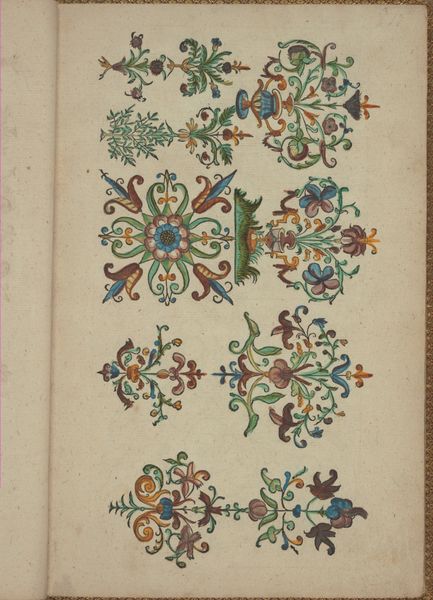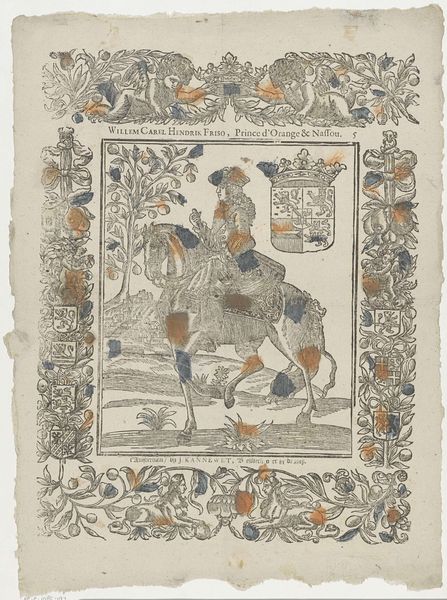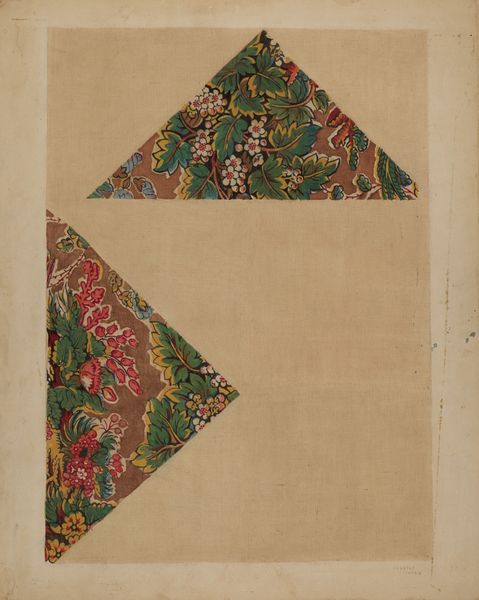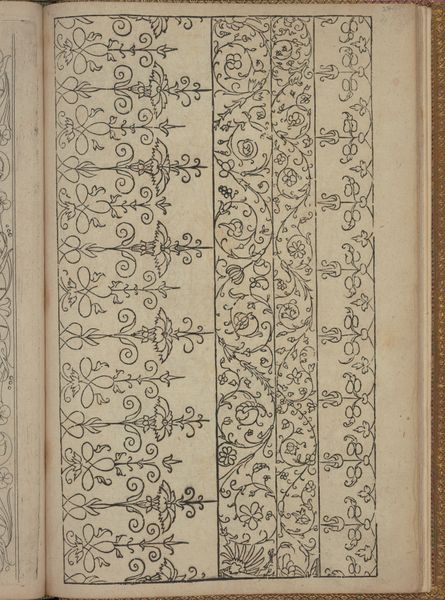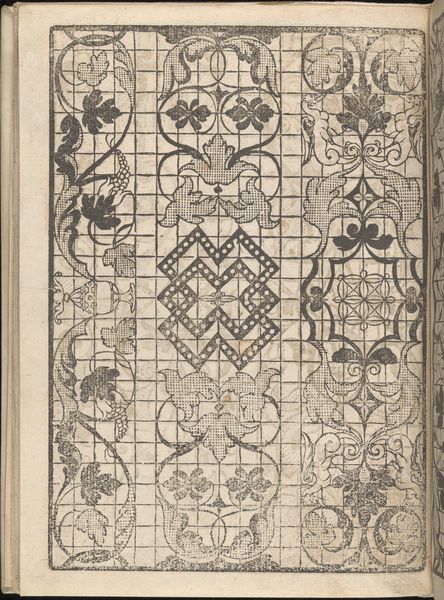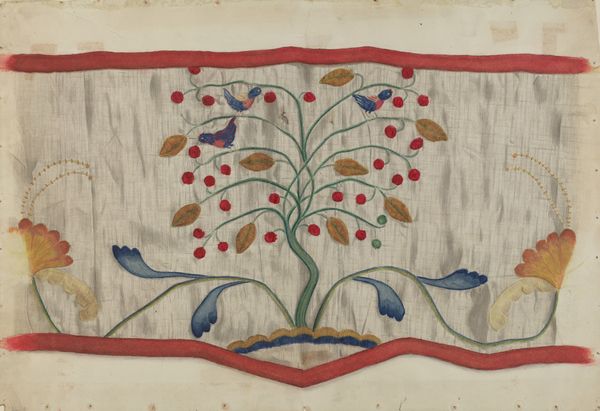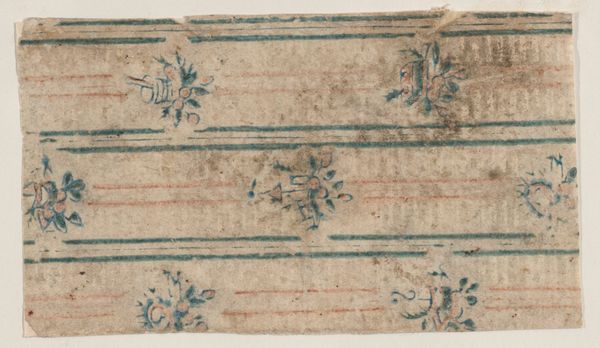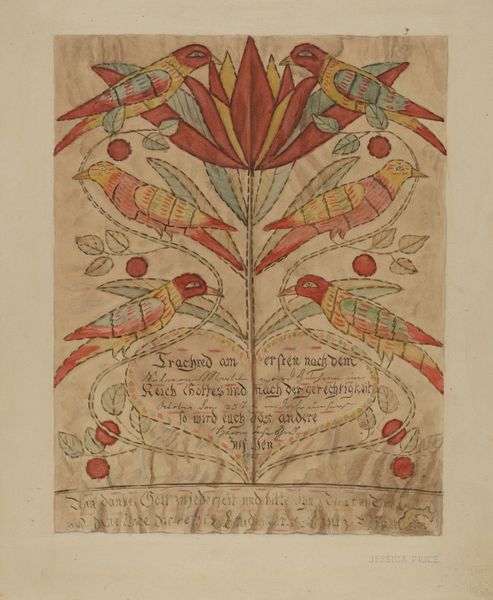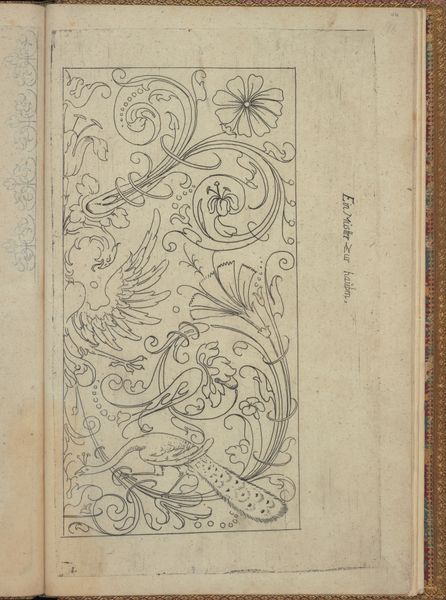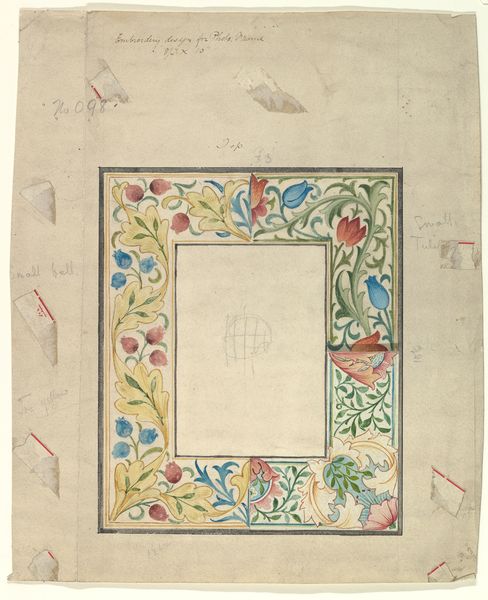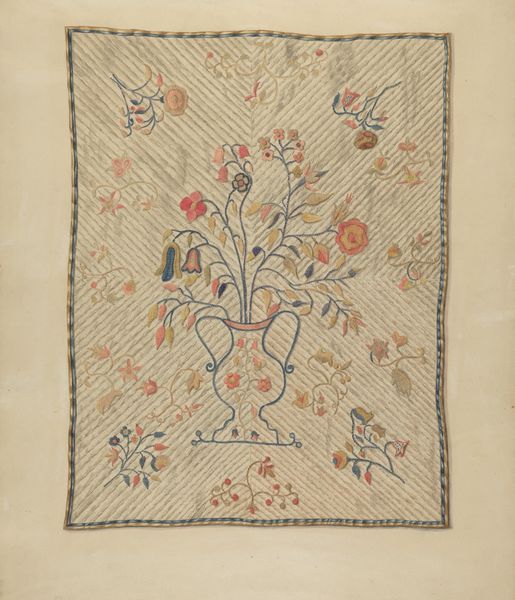
drawing, textile, watercolor
#
drawing
#
textile
#
watercolor
#
folk-art
Dimensions: overall: 35.7 x 26.5 cm (14 1/16 x 10 7/16 in.) Original IAD Object: 34" wide; 42" long
Copyright: National Gallery of Art: CC0 1.0
Curator: What strikes me first is the sheer tenderness of this object, the gentleness radiating from the soft colors and delicate rendering of those stars. Editor: We’re currently observing "Crib Quilt," a watercolor and textile drawing created circa 1937 by Cora Parker. It presents as an exemplary folk art piece, reflecting an aesthetic deeply rooted in material culture and homespun craft. The medium itself—watercolor rendering a textile—is quite compelling. Curator: Yes, it's interesting to consider the contrast. A transient medium attempting to capture something far more enduring, a kind of stubborn domesticity. Did anyone actually ever make this quilt from her drawing? Because as a drawing it captures something more than the object ever could. Editor: Exactly, the drawing gains an autonomy beyond a mere preparatory sketch. Parker uses the geometric clarity of star patterns not just to depict, but to explore underlying structures of color and composition. Observe how the upper section employs smaller, more densely packed stars set against a vertically striped background versus the lower section which showcases fewer, larger stars amid a lattice design. Curator: I agree. It really divides the spatial organization into distinct compositional zones, almost as if testing two ideas within the same frame. And note that thin band of repeated star pattern along what would be the upper edge of the quilt—a framing echo. It brings the work a comforting familiarity, wouldn't you say? Editor: Precisely. It enriches a sense of both surface design and deeper geometric intent. By using watercolor, Parker infuses the textile rendering with an ethereal, almost dreamlike quality, suggesting the themes of warmth, safety, and a gentle protection offered by the quilt. Curator: Looking at it has allowed me to ponder not just its form, but its function. This piece, at once representation and perhaps instruction, creates a powerful nexus between utility and aesthetic contemplation. I feel almost melancholic imagining the now-distant hand creating this. Editor: Indeed. The intersection of geometric rigor and delicate execution—and, not insignificantly, a tangible vision of utility and craft—places this work in a poignant conversation with the history of material production and our contemporary regard for folk art. It resonates on both structural and sentimental levels.
Comments
No comments
Be the first to comment and join the conversation on the ultimate creative platform.
